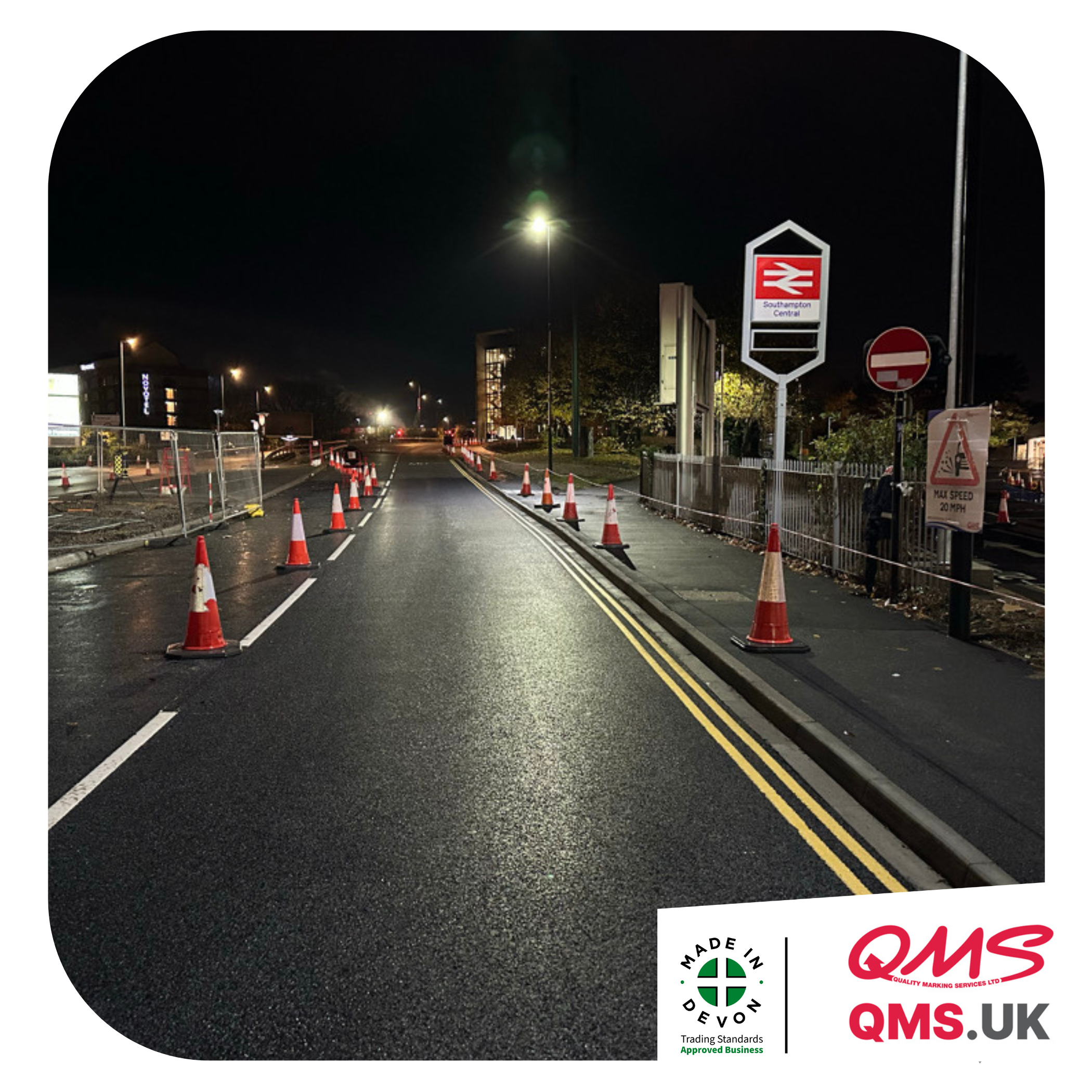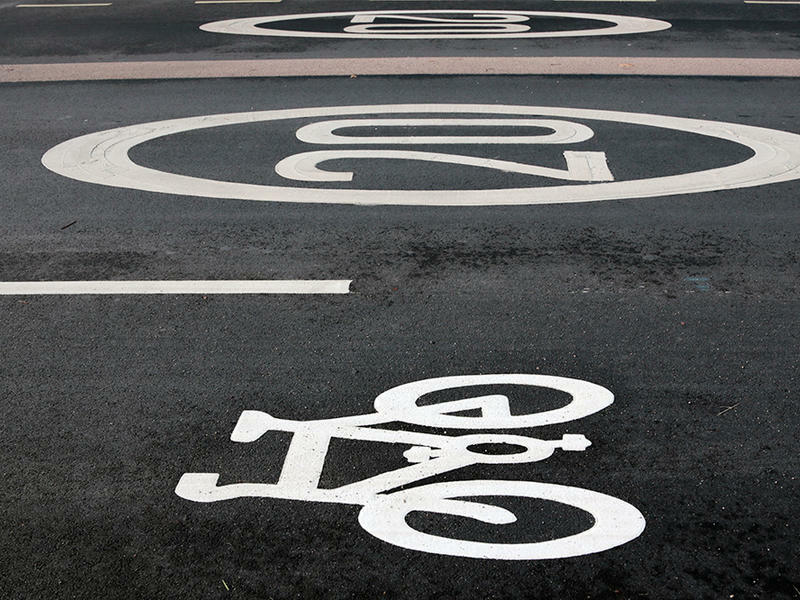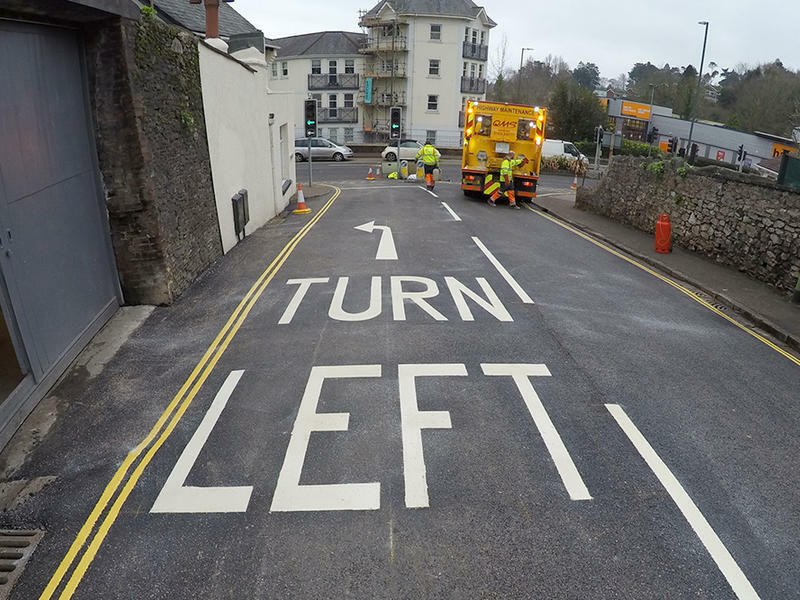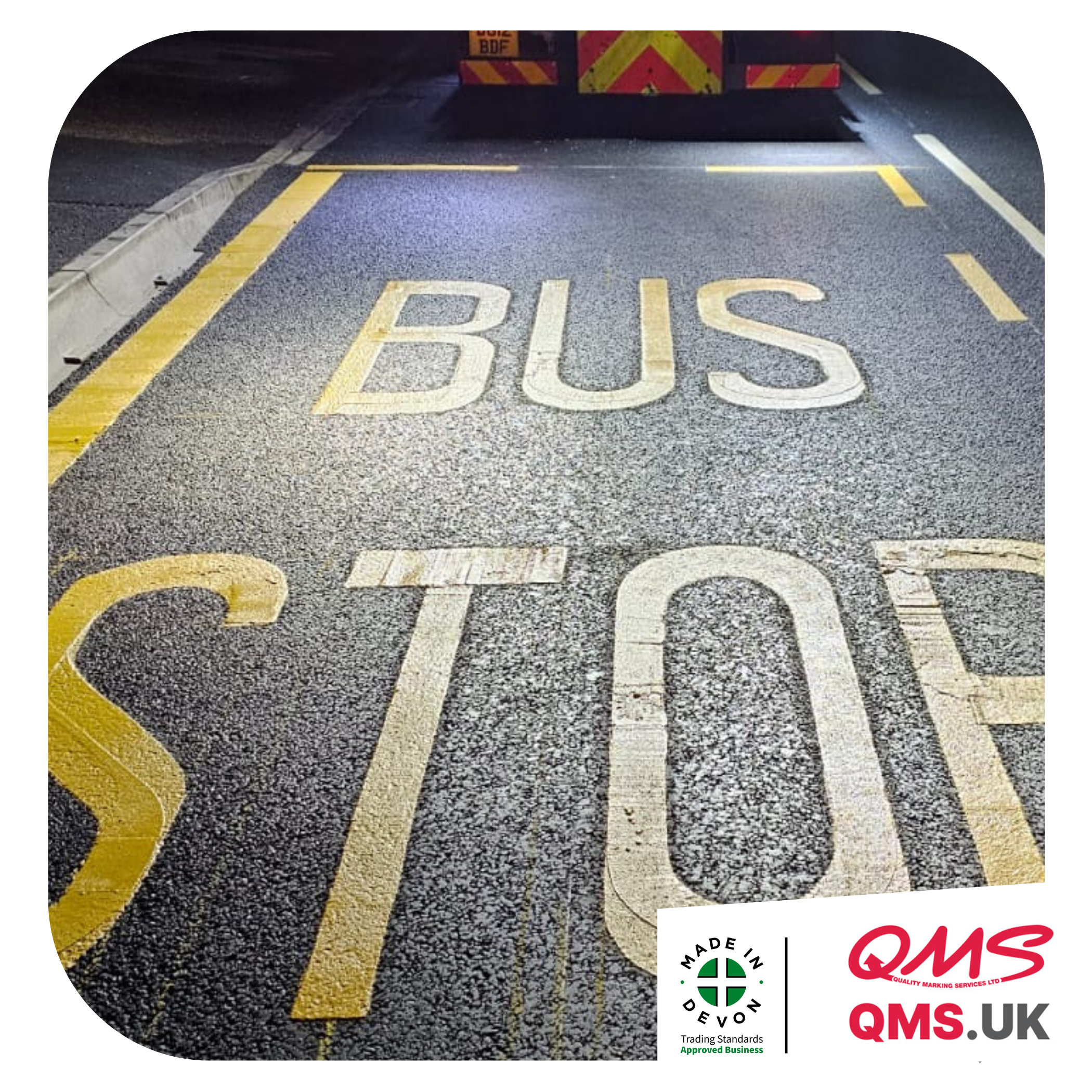News & Events

At QMS, we don’t just specialise in installing road markings across the UK, we are also passionate about educating and inspiring the next generation about road safety. (One of the many reasons why we offer free ‘highway safety’ markings to schools who’ve had their playground markings installed by us.)
How QMS can help with road markings
QMS offers our QMS HyperLine™ road marking systems to combat failing night-time performance, increasing the road line visibility on busy roads across the country, including highways, dual carriageways, country roads, cities and villages.
Why are road markings installed in the UK?
The UK has a wide range of strict guidelines in place to help ensure road safety, including road markings. Below, we break down the different types of road markings you will see on your travels and the differences between them all. It’s important all drivers are aware of the meanings of each, to not only protect themselves but other drivers and pedestrians.
Solid white line road markings:
When accompanied by a traffic light, stop signal or other instruction sign, a solid white line across the lane, tells traffic where where you must stop, i.e. when the traffic light is red.

Double broken white line road markings:
Double broken white lines are seen in numerous places on both highways, A and B roads. These double broken white lines indicate that you’re about to join a major road, where the drivers already on that road have priority.
Therefore, you must slow down, look and give way to those cars before committing to pulling out. If the road is clear, you do not have to come to a complete stop before joining. However, you must be prepared if a vehicle appears (or if your visibility is poor in either direction).
Single broken white line at a roundabout:
When approaching a roundabout (not a traffic light-controlled roundabout) you will usually see a single broken white line to mark where you need to give away to vehicles to the right of you.
Larger roundabouts will often have thinner lines and mini roundabouts will have thicker and chunkier lines, but they both mean the same thing - to stop, look and give way to the right before proceeding.
Centre broken white centre line markings:
Single broken lines down the centre of a carriageway, dual, three-lane or single-lane. They are there to separate you from the traffic either in the other lane or going the opposite direction.
You can cross them to overtake obstacles or slower-moving traffic, as long as there is plenty of space and it is safe for all road users for you to do so. You must also keep within the speed limit when overtaking at all times.

White line divider road markings:
Broken white lines can also indicate lane boundaries on motorways and dual carriageways. Indicating the boundaries that drivers should be staying inside in their chosen lane. Again, you can cross over these line markings in the event of overtaking an obstacle or a slower vehicle, but care should always be taken and the speed limit for the road should not be exceeded.
Double white road lines - one solid & one broken:
In some single-lane roads, you will notice that the road markings often change depending on the surroundings, locations and gradient of the road. In this case, where the nearest line to you is broken, you may cross the line to overtake (if it is clear and safe to do so, without breaking the speed limit).
If you see arrows on the road pointing back towards your lane - this indicates that you have limited time and distance to complete your overtaking manoeuvre. Take this into consideration when thinking about overtaking on these roads.
However, if the solid line is on your side of the road, you are unable to overtake or cross the lanes. This solid white line will highlight that it is unsafe for you to overtake and these may appear in sections on the road with blind bends, hills or other visibility obstructions.
If the solid white line is closest to you, you may only cross it if you feel it is safe to do so and you meet the following criteria:
You need to turn into a property or side road
You’re overtaking a parked vehicle, cyclist, horse or a vehicle going at 10 mph or less
Please note, if you’re overtaking a horse you must travel under 10 mph and leave a 2m gap and cyclists must have a 1.5m gap (more if you’re travelling faster than 30mph).
Double solid white lines
If you’re travelling on a road with double solid white lines, separating you from the traffic going in the opposite direction, you can only cross in limited circumstances. If you attempt to cross these lines to overtake outside of the limited circumstances, you could receive a fine or points on your licence.
You may only cross it it is safe to do so and you meet the following criteria:
You need to turn into a property or side road
You’re overtaking a parked vehicle, cyclist, horse or a vehicle going at 10 mph or less

Parking lines & their meanings

At QMS, we don’t just specialise in installing a range of road line markings, but also car park line markings, for private and public car parks and on-street parking. Regular car parking line markings include:
Single yellow lines
A single yellow line marking indicates that there are waiting and parking restrictions at force. These lines are often accompanied by specific road signage informing you of what these times are. (Such as no parking between 7am and 9am).
These lines apply to both the road that they are installed on and the pavement beyond it. (Please note, blue badge holders can usually park on single yellow lines, for up to 3 hours)
Double yellow lines
Double yellow line markings indicate that no vehicles are allowed to park on these lines at any time. Unless indicated otherwise by on-street signs.
Kerb markings
In some cases, the double or single yellow lines will be continued onto the kerb and these can mean different things:
Single-line kerb markings: Indicate that loading or unloading can be included at pre-specified times only.
Double-line kerb markings: This means you cannot stop to load or unload at any time. However, you may stop to pick up or set down passengers, as long as you depart quickly.
Red lines
In some places, including busy areas of London, ‘red routes’ are set out indicating that parking restrictions are marked by red lines, as opposed to the traditional yellow lines. While the meanings of them are the same, the colours are different.
Parking bay markings
A common site on residential roads, parking spaces are normally enclosed by broken white lines and may have some form of parking restrictions, i.e. parking permits, ticketing restrictions, set timings, etc.
(In London, or places that use the red line markings, parking bays may have red dashes in them, highlighting that they can only be used for unloading and loading at particular times only, with a 20-minute use limit.)
Please note, in some cases, you may see named parking bay markings which indicate that they can only be used by a particular vehicle (who will often have a permit or letter to highlight who they are). Named bay parking markings, can include:
Firefights
Doctors
Police
Numbered houses
Disabled
Other UK road markings & their meanings
When driving from ‘a’ to ‘b’, especially if ‘b’ is an unknown destination, it can be difficult to read the roads, especially if you’re driving at night time or in low-visibility areas.
Other road markings include:

Edge line
A continuous single white line on the edge of the road, indicates where the edge of the road is. Motorists must keep to the right of it, as it could be protecting you from verges or other obstacles. In some cases, the white edge line is raised, so drivers can hear and feel if your wheels drift towards it.
Give way triangle
The give-way triangle can be used for cars and bikes in various instances including:
If the road previously had traffic coming from both directions and narrows in one place, a giveaway triangle will indicate which side of the road has priority over the other
If you’re merging from a side road onto a busier road, the giveaway triangle will indicate that you will need to
Giveway triangles can also be used for cyclists on cycle paths or when the cycle path ends and they have to join the main road
Pedestrian crossings
In the UK, we have various pedestrian crossings, including pelican crossings (when a button is used to control the traffic lights, for the pedestrians to cross the road safely) and zebra crossings, when drivers have to brake for waiting pedestrians.
There are a couple of things to bear in mind when looking out for pedestrian crossings:
Stop lines: Stop lines will be on either side of the pedestrian crossing indicating where you must come to a full stop
White zig-zags: You’ll find white zig-zag lines on either side of the pedestrian crossing, on the edge closest to the kerbs. These lines should not be parked on or stopped at, as your vehicle could obstruct pedestrian and vehicle visibility
Direction lanes
As you approach junctions, roundabouts and motorway exits, you often see large white arrows, road names and major destinations painted on each lane. These help drivers recognise which lane they should be getting in when approaching the junction, roundabout or motorway exit.
Instructions
In many instances, you will see words like ‘slow’, ‘stop’ or ‘keep clear’, these are all instructions that you, as a driver, must follow.
Slow - go slower, these warnings are normally in places where hazards or obstructions are common
Keep clear - these are here to highlight that you should keep the space clear, they are normally placed at entrances to junctions
Stop - these indicate that drivers must come to a complete stop and assess whether it is safe to merge onto the road or junction

Bus lanes & bus stops
Bus lanes are often spotted on most roads in and around towns and cities and indicate an area of the road where buses and taxis are allowed to drive. In some cases, the bus lanes are accompanied by a sign stating what times of days the bus lanes are active, normally during rush hour traffic. Bus lanes without any signs accompanying them are often in use 24 hours a day.
Bus lanes normally have the words ‘bus lane’ written on them and are separated from the rest of the traffic with a broken or solid white line. In some instances, the bus lane may even be a different colour surface.
Bus stops are normally bordered by yellow broken lines with the words ‘bus stop’ painted within in yellow.

Cycle lanes
Similar to bus lanes, cycle lanes are often indicated with a pedal bike symbol on them and will be separated with a solid or broken white line, or in some cases, raised curbs for increased safety.
In most cases, cars shouldn’t cross over into the cycle lane unless it’s unavoidable. However, if you are, check your mirrors, indicate and ensure that it is safe to do so.

Yellow box junctions
Yellow boxes can be found in various locations across the UK road network, including but not limited to:
Large roundabouts
Large junctions
Roads with roads that connect on and off
The general rule is not to stop in the yellow box unless you’re turning right. Let me explain more:
Turning left or going straight on
If you’re going straight on, or turning left when you approach a yellow box, you are not permitted to stop on the yellow hatchings. The reason being, if you did stop in the yellow box you would be in the way of oncoming traffic, which can be dangerous or hold up other traffic.
This is why you may only enter the yellow box if your exit path out of the box is clear.
Turning right
If you’re turning right, you are allowed to stop in the box. However, you will still need to check that your exit route is clear before you move on.
Chevrons
Often found in various parts of dual carriageways or motorways. They will be painted at regular intervals along the road and will be accompanied by signage telling you to keep two chevrons apart from the vehicle in front of you.
These are designed to help drivers monitor their speed on busy and fast roads, to increase safety.
How Can QMS Help With Highway Road Markings?
At QMS, with over two decades of line and road marking experience, no matter what type of road marking you need, our teams are on hand to help.
To find out more about our wide range of highway road marking services and past projects, see our case studies pages, or peruse these blog posts:
For more information, or to book your free, no-obligation estimate, get in touch with our friendly team today by emailing info@qms.uk or calling us on 01626 836777
Share
Let QMS deliver beyond your expectations,
talk to our team today
01626 836 777
Contact Us Leave a review on Google
Leave a review on Google